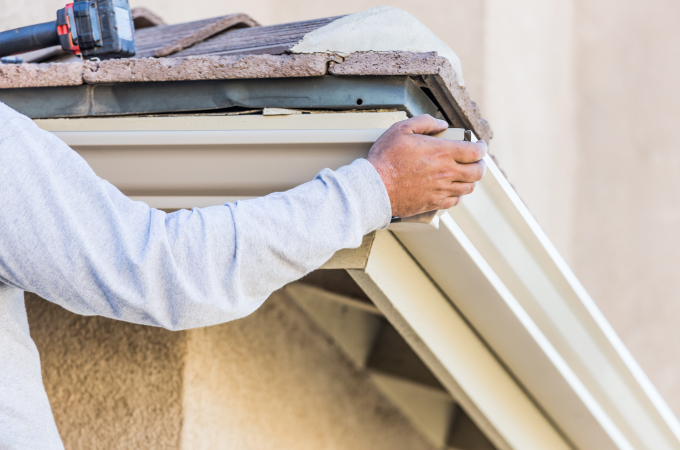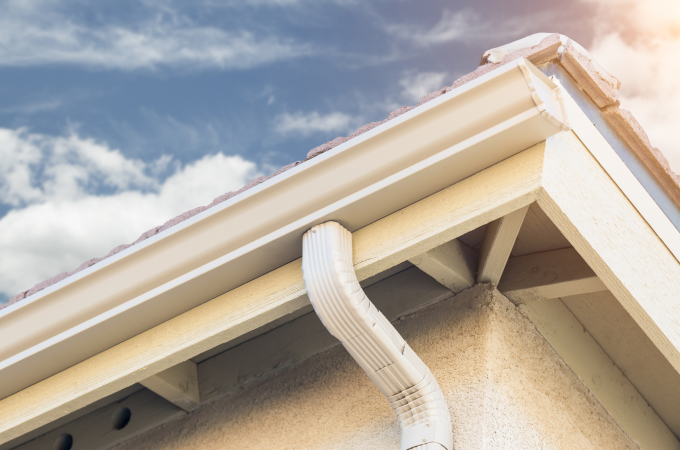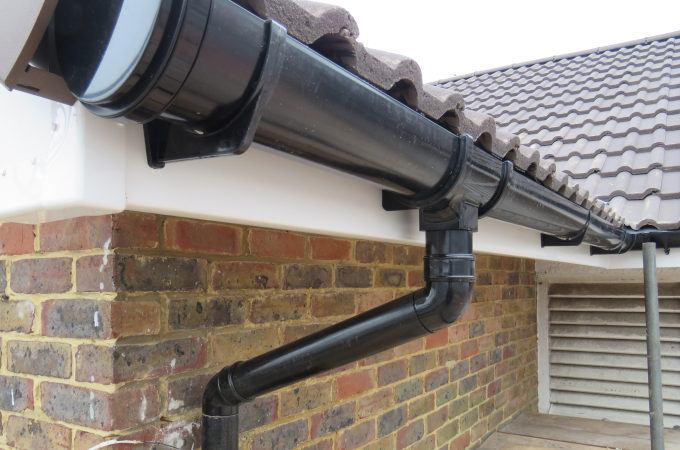Rain chains are a beautiful and effective alternative to traditional downspouts, but only in certain situations. In this guide, you will learn when to use rain chains and when to avoid them, how they are installed, and the differences between the most common types of rain chains on the market today.
What Are Rain Chains?
Rain chains are decorative items that help guide the flow of water from your gutters to a predetermined location on your property. They take the place of closed downspouts to enhance your home’s aesthetic appeal and allow you to enjoy the sight and sound of flowing water. Imagine sitting on your porch and listening to a bubbling stream, even when there is no stream nearby. That is exactly the type of experience rain chains can provide.
Cup vs. Link Chains
Though there are variations of the two styles, cup and link chain styles are the two main categories. Each offers its own inherent set of benefits, as well. For example, cup-style rain chains can move more water than their link counterparts, and they come in various decorative styles, too. You can find cups in almost any shape imaginable, which gives you the opportunity to customize your home’s exterior a great deal. Conversely, link chains are often simpler, though each link or loop is decoratively styled. They cannot move as much water as the cup-style rain chains, but they do provide a more reserved aesthetic finish.
Who Can Consider Using Rain Chains?
For the most part, anyone can use rain chains in place of more traditional closed downspouts – with a few exceptions. If you live in a part of the country that experiences incredibly heavy rainfall regularly, you should remember that rain chains cannot move the same volume of water as a downspout. If you attach rain chains to your gutters, but the rainfall is too much for the rain chains to handle, you may find that the water cannot follow the chain as intended. This could lead to unwanted flooding or foundation damage.
The Best Installation Kit
The best way to install a rain chain is to anchor it to an existing gutter. It is possible to simply remove the existing downspout and anchor a rain chain in its place, though some alterations may be necessary. As far as drainage is concerned, you have a couple options here, as well. If your location does not experience heavy rainfall, then you might opt for the end of your rain chains to lead to a decorative basin that you can empty after each rainfall. On the other hand, if your area receives quite a bit of rain, it may be best to extend your rain chains outward away from your home and into your home’s drainage system.
What About Electrolysis?
Electrolysis can occur if your rain chain clip or anchor is copper and you install it on aluminum gutters. Electrolysis occurs when the metals interact, and it actually causes the metals to deteriorate over time. There are ways to prevent electrolysis during installation, and the most common involves adding some sort of barrier between the two metals. Plastic clips can fit between the copper and aluminum, or you might even consider an ice shield of some sort. As long as there’s no direct contact, you should not experience any issues.
Rain chains are an excellent way to help transform not only the aesthetic appeal of your home’s exterior but also your experience when you sit outside during a gentle rain. With so many different options from which to choose, it’s no wonder that homeowners everywhere are trading their closed downspouts for beautiful rain chains.
Contact your Gutter Supply representative @ 888-909-7246 for any additional information.
 Contractors
Contractors



